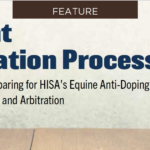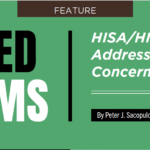People seem to love Pinterest. Users can find what they like and file it away without the clutter associated with an actual bulletin board. Pinterest has become a great way for businesses to promote their products and work by posting images for others to comment on and share. Pinterest has exploded in popularity, entering into the top 10 social networks.
With popularity comes caution as to the use of the popular site. Pinterest users can become vulnerable to lawsuits, if they don’t have permission to use the content. Most risks from Pinterest to physicians in medical practices come from two areas: photographs and professional responsibility for advertisements. Just remember physicians open the door for a claim anytime they improperly pin or post an image on Pinterest. Here are some things medical practices need to do to stay safe when using Printerest.I.
I. Whose Photo Is it?
Do not use photographs taken by others without their expressed written permission. Photographers can own copyrights to their photographs. Do not violate someone else’s copyright by posting their photographs without their permission.
II. Posing Before and After Photographs…
By using photographs taken in your practice, you avoid the potential problem of violating someone else’s copyright, but the problems do not end there. You need to have your patient’s permission to use the photograph of him or her. I recommend that you specifically note that the photographs maybe placed in an electronic format where you no longer exercise control over them. This disclosure is important because it gives fair warning to the patient that they cannot later change their mind and revoke permission, thus causing the photos to come down. Once photographs are on Pinterest they will be electronically “pinned” on other users boards, thus being outside of your control.
When posting before and after photographs on Pinterest, you should also use language that states “individual results may vary” or “results not typical”. These statements need to be employed because of recent attention from the National Advertising Division (NAD) and the Federal Trade Commission (FTC) specifically the NAD which recently issued a decision regarding Pinterest. NAD began following NutriSystem Inc.’s weight loss stories that claimed great success and linked back to the NutriSystem website. The NAD found that it was undisputed that these “pins” represented customer testimonials and as such the “pin” should be accompanied by clear and conspicuous disclosure noting that typical results customers can expect to achieve using the NutriSystem weight loss program. The NAD and the FTC have taken particular interest in social media sites such as Pinterest, so be careful.
III. Professional responsibilities when promoting your practice
By utilizing sites such as Pinterest, physicians are promoting their practices. This means that their activities need to comply with their relevant boards of medicine. Boards of medicine have rules of professional responsibility for physicians when advertising or otherwise when promoting themselves. These rules vary by state. For example, some states find that it is not permissible to use before and after photographs of your patients even with their permission. All states would agree that a physician cannot make fraudulent statements about their ability or patient results. Before placing anything on Pinterest, it is best to do a quick review of the physician’s responsibilities and obligations as set forth by their licensing board(s).
IV. Only the paranoid survive….
Assuming that you have your patient’s permission and that you’re permitted to do so by the licensing board, you still want to protect yourself. Here are some useful tips for owners of photographs when placing them on Pinterest.
- Include copyright statements on your website
- Include code on your website that prevents an image from being copied
- Consider including a watermark on your images
Image owners who do not want their material shared on Pinterest can add a small piece of Pinterest-provided code to their website that prevents Pinterest users from sharing that site’s content.
Pinterest states they follow the Digital Millennium Copyright Act (DMCA) to ensure they are in compliance with all copyright laws. The DMCA divides websites into two categories: service provider and content provider. Service providers are websites like Facebook, Twitter and Pinterest. Content providers create content. The DMCA provides a safe harbor for service providers. Therefore, when a user violates copyright laws, the service provider ‘Pinterest’ can chose to follow the DMCA safe harbor provisions and not be held liable for the actions of the user.
Given the popularity of Pinterest and the demographics of its users, many aesthetic practices will be interested in using this site, but being aware of the areas of concerns stated above, physicians should be able to move forward safely.
Michael J. Sacopulos is the CEO of Medical Risk Institute (MRI).Medical Risk Institute is a firm formed exclusively to provide proactive counsel to the healthcare community to help providers understand where liability risks originate, and reduce or remove these risks. He may be reached at msacopulos@medriskinstitute.com.





